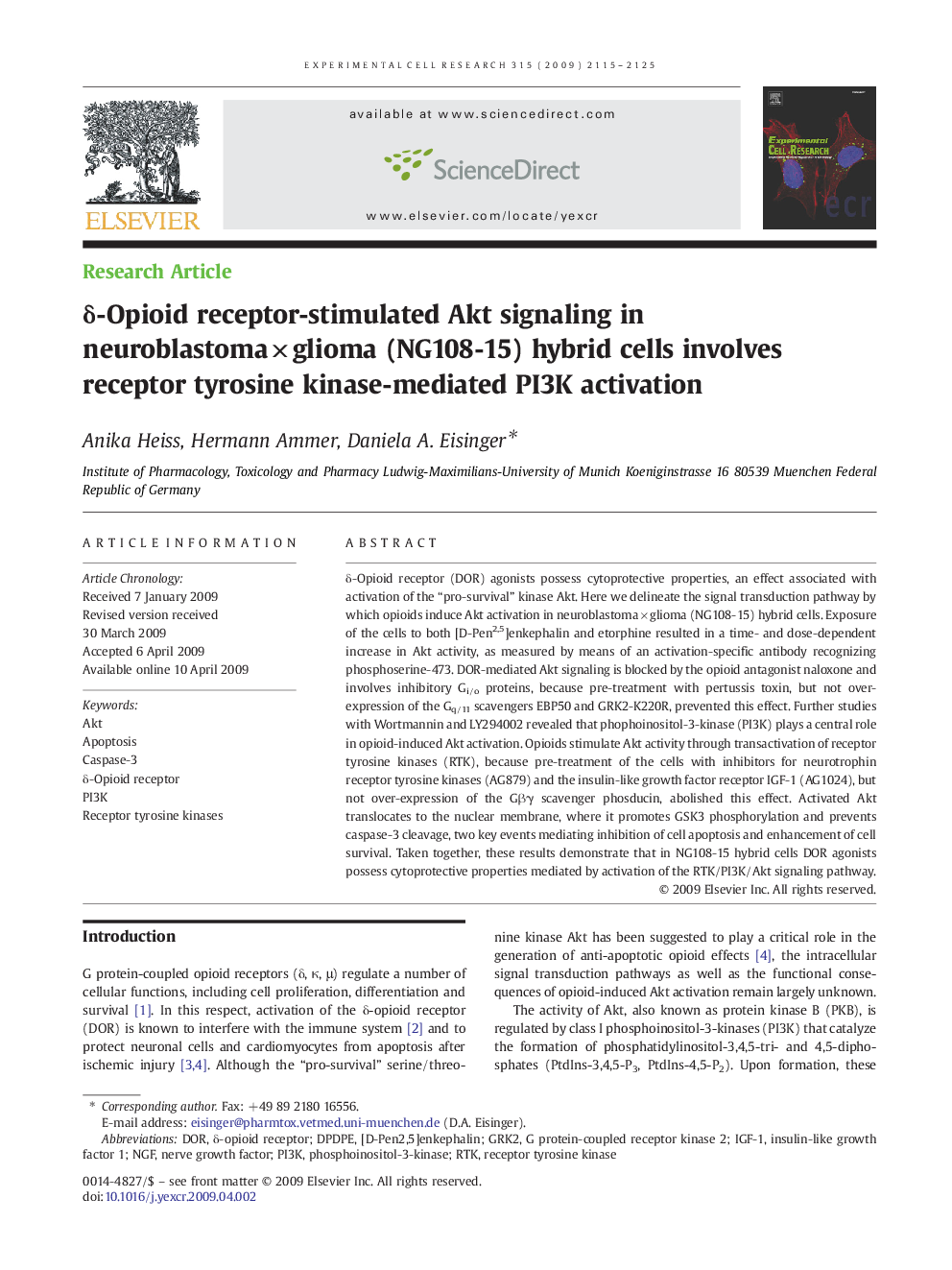| Article ID | Journal | Published Year | Pages | File Type |
|---|---|---|---|---|
| 2131298 | Experimental Cell Research | 2009 | 11 Pages |
δ-Opioid receptor (DOR) agonists possess cytoprotective properties, an effect associated with activation of the “pro-survival” kinase Akt. Here we delineate the signal transduction pathway by which opioids induce Akt activation in neuroblastoma × glioma (NG108-15) hybrid cells. Exposure of the cells to both [D-Pen2,5]enkephalin and etorphine resulted in a time- and dose-dependent increase in Akt activity, as measured by means of an activation-specific antibody recognizing phosphoserine-473. DOR-mediated Akt signaling is blocked by the opioid antagonist naloxone and involves inhibitory Gi/o proteins, because pre-treatment with pertussis toxin, but not over-expression of the Gq/11 scavengers EBP50 and GRK2-K220R, prevented this effect. Further studies with Wortmannin and LY294002 revealed that phophoinositol-3-kinase (PI3K) plays a central role in opioid-induced Akt activation. Opioids stimulate Akt activity through transactivation of receptor tyrosine kinases (RTK), because pre-treatment of the cells with inhibitors for neurotrophin receptor tyrosine kinases (AG879) and the insulin-like growth factor receptor IGF-1 (AG1024), but not over-expression of the Gβγ scavenger phosducin, abolished this effect. Activated Akt translocates to the nuclear membrane, where it promotes GSK3 phosphorylation and prevents caspase-3 cleavage, two key events mediating inhibition of cell apoptosis and enhancement of cell survival. Taken together, these results demonstrate that in NG108-15 hybrid cells DOR agonists possess cytoprotective properties mediated by activation of the RTK/PI3K/Akt signaling pathway.
